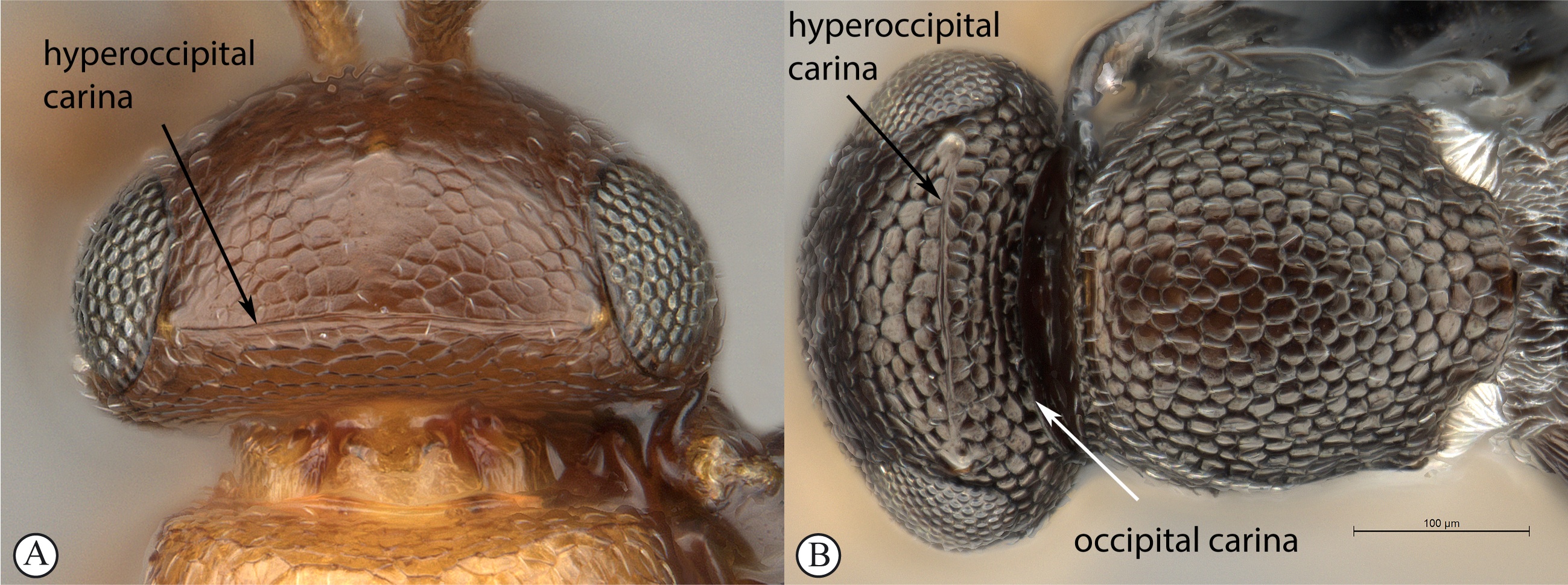
1.
Hyperoccipital carina present between the lateral ocelli (distinct
from occipital carina) (A, B) …2
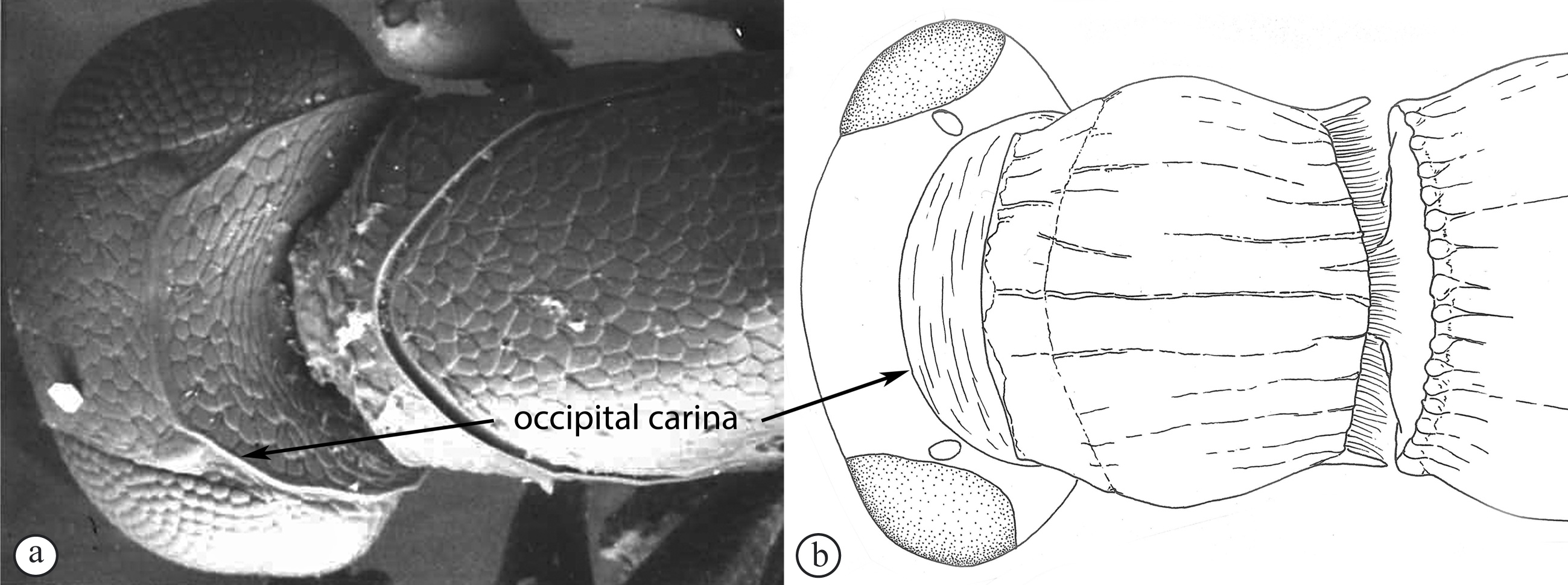
-
Hyperoccipital carina absent, if carina present between ocelli then
clearly part of occipital carina (a, b) …4

2. Head
and mesosoma covered with small compact plates (A, B, C) …Parabaeus
armadillus Austin
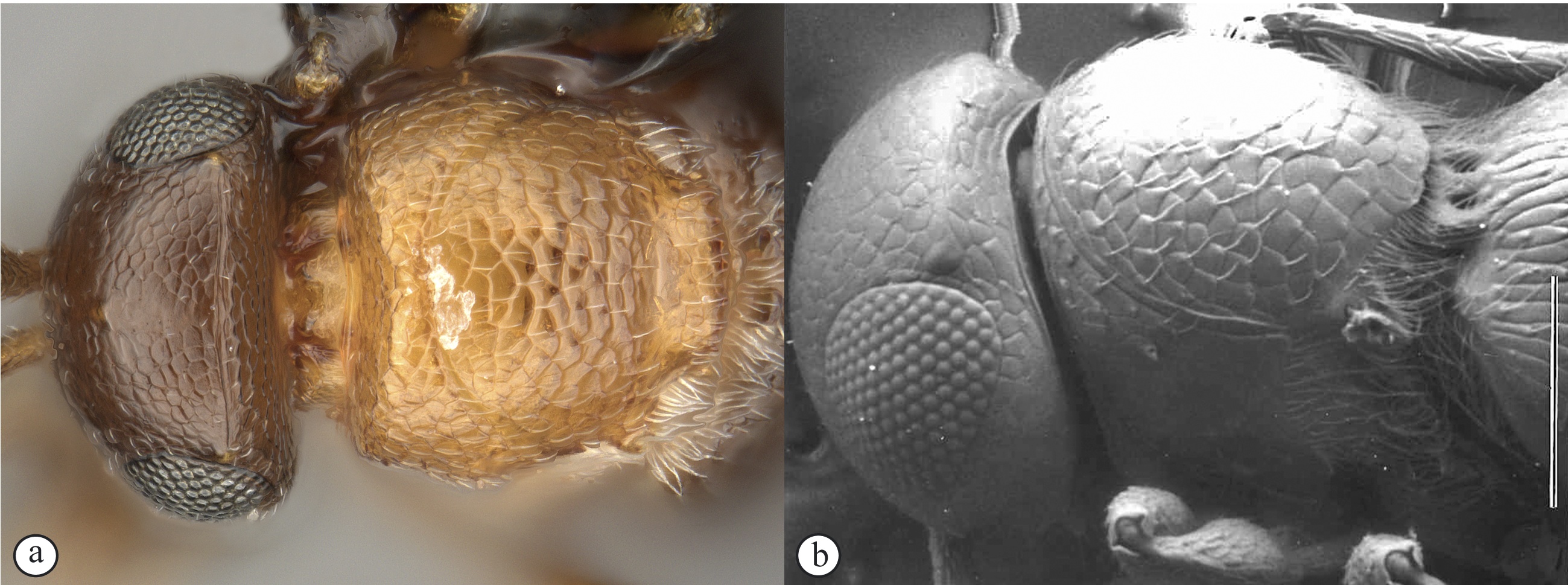
- Head and
mesosoma covered with imbricate (squamate) sculpturing (a) …3
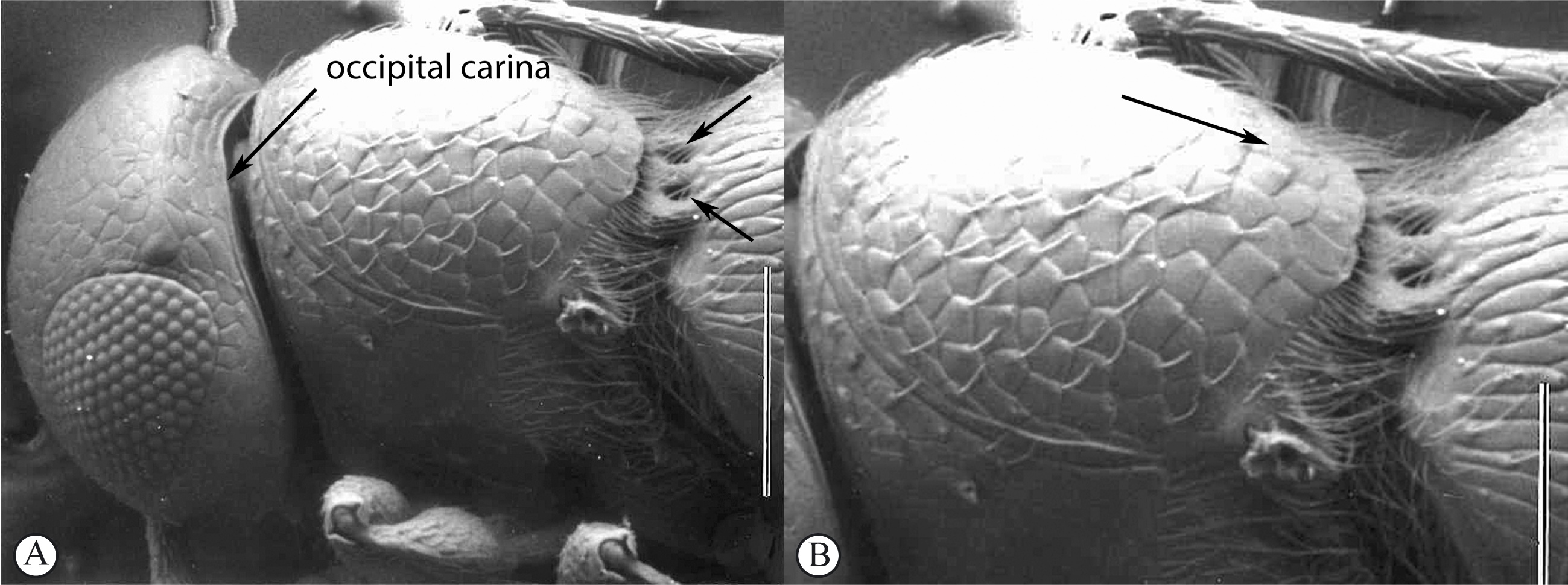
3. Base of
metasoma with obvious foveate pits (A); occipital carina strong and
visible in dorsal view (A); mesoscutum and scutellum evenly convex
(B) …Parabaeus
peckorum Austin
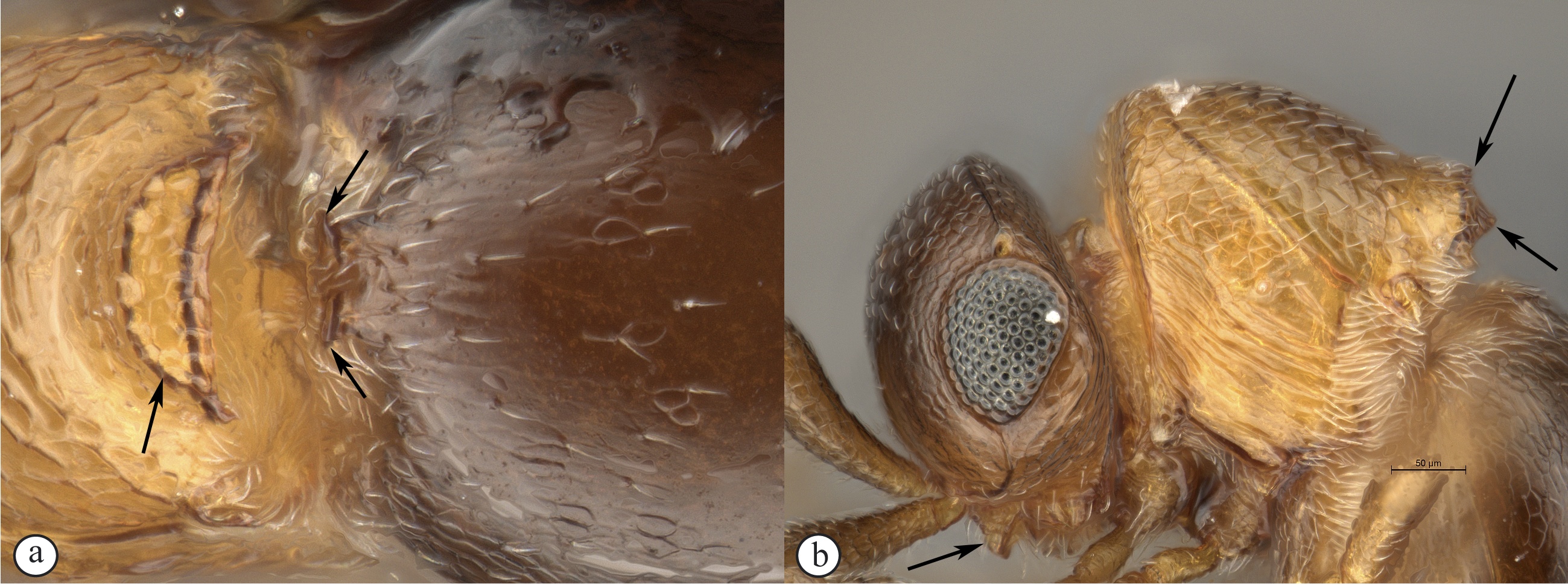
-
Base of metasoma without obvious foveate pits, with bifurcate
projecting medial plate (a); occipital carina not visible dorsally;
posterior mesoscutum and scutellum raised into a medial plateau-like
(a, b), transversely ellipsoidal projection (a); clypeus produced
into nasute-like process (b) ...Parabaeus nasutus van Noort
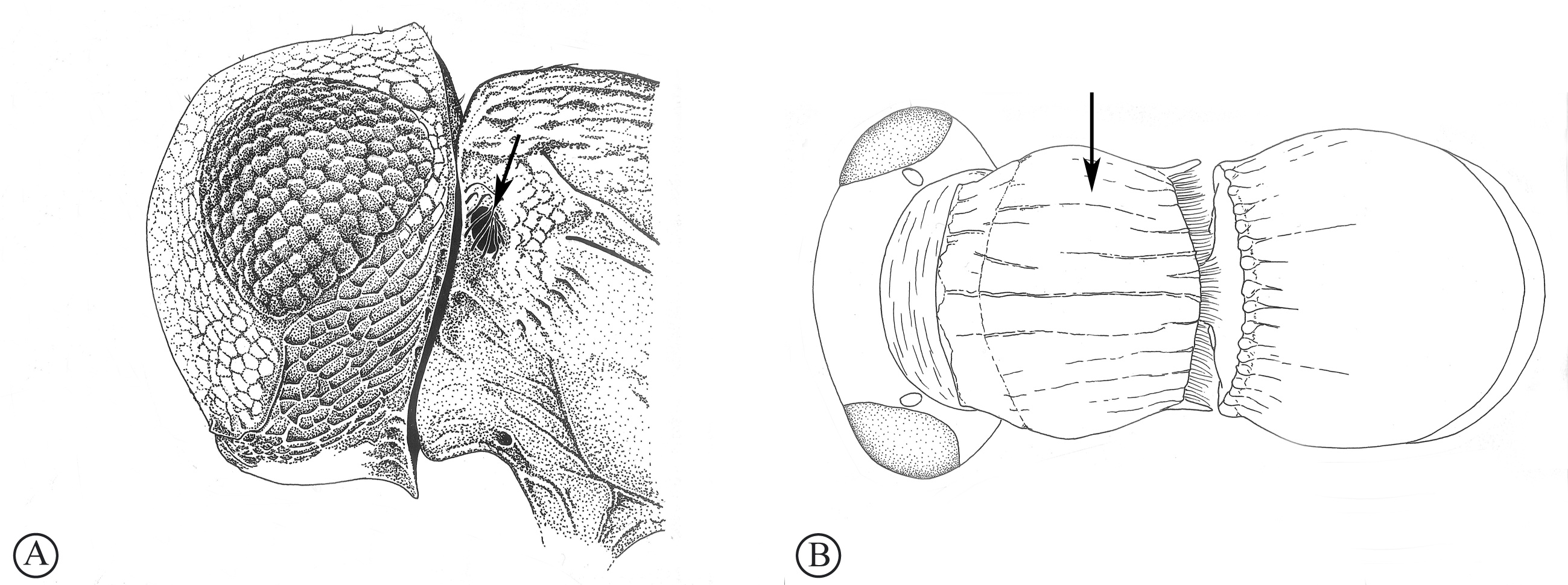
4.
Anterolateral mesosoma with large pit (A); dorsal mesosoma
longitudinally striate (B); metasoma normal, tergite 1 not developed
into a horn (B) …Parabaeus
abyssus Austin
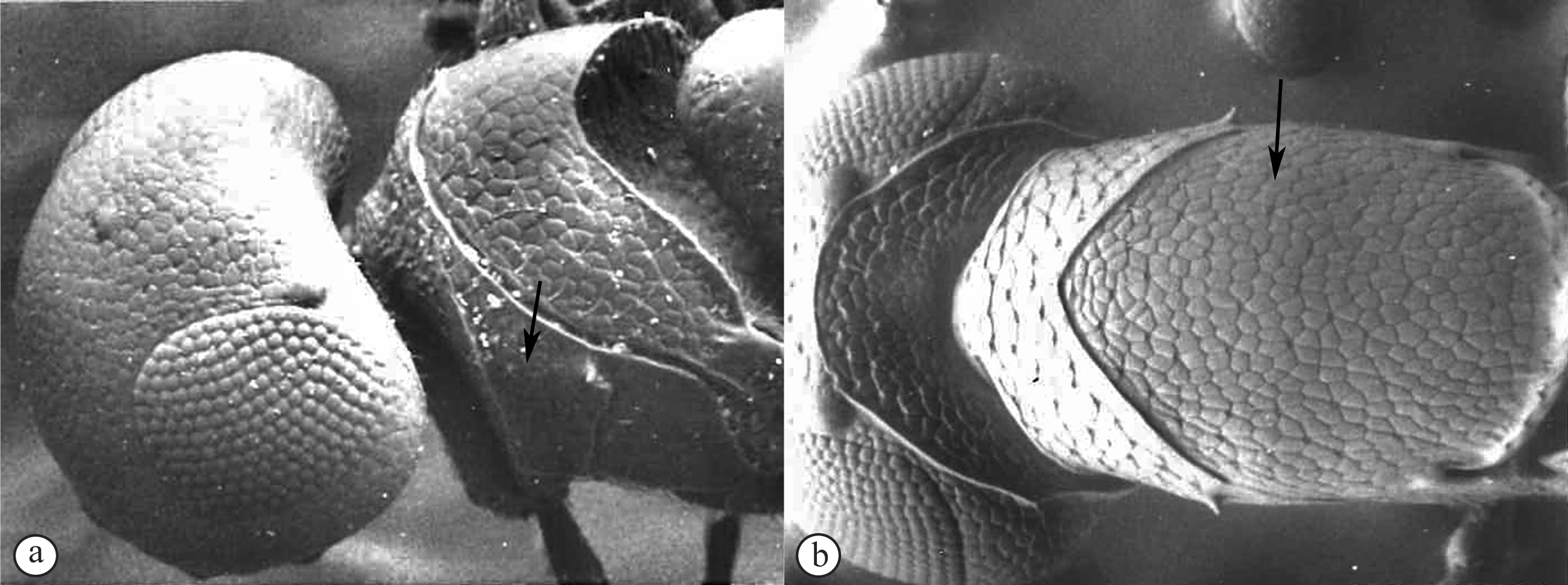
-
Anterolateral mesosoma without large pit (a); dorsal mesosomal
surface reticulate-coriaceous (may be entirely excavated) (b);
tergite 1 in females developed into a horn …5
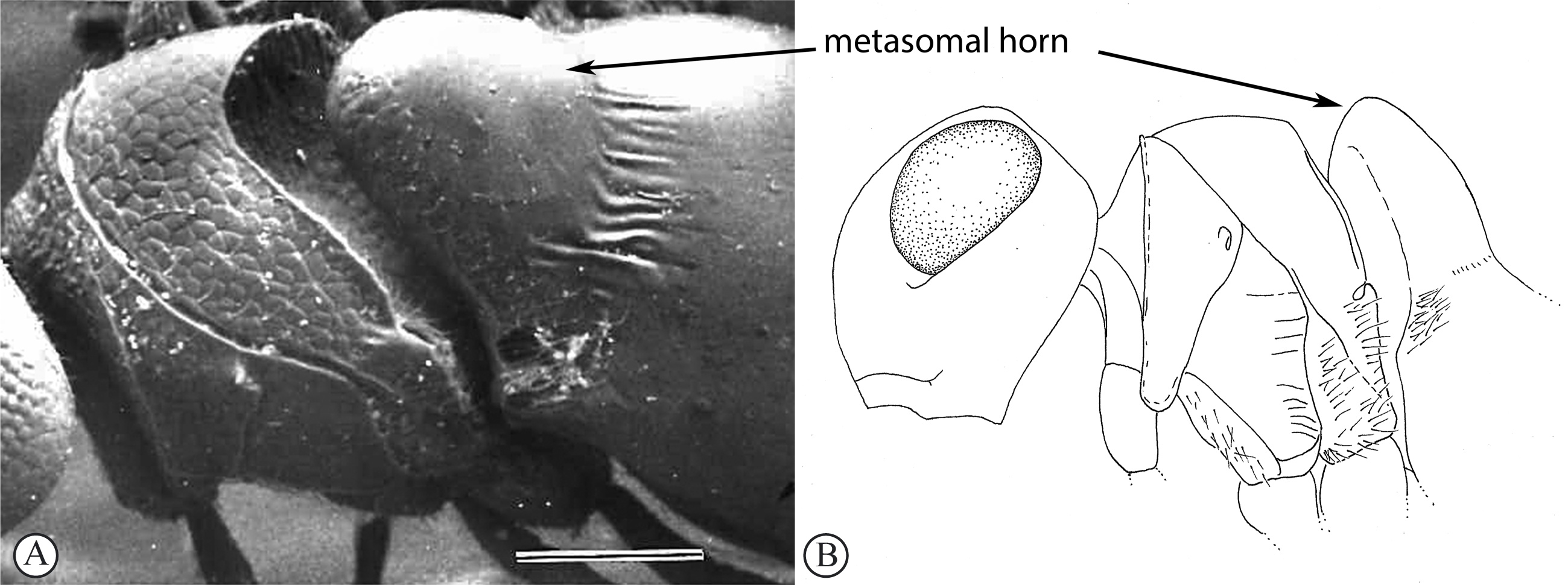
5.
Metasomal horn present (females) …6
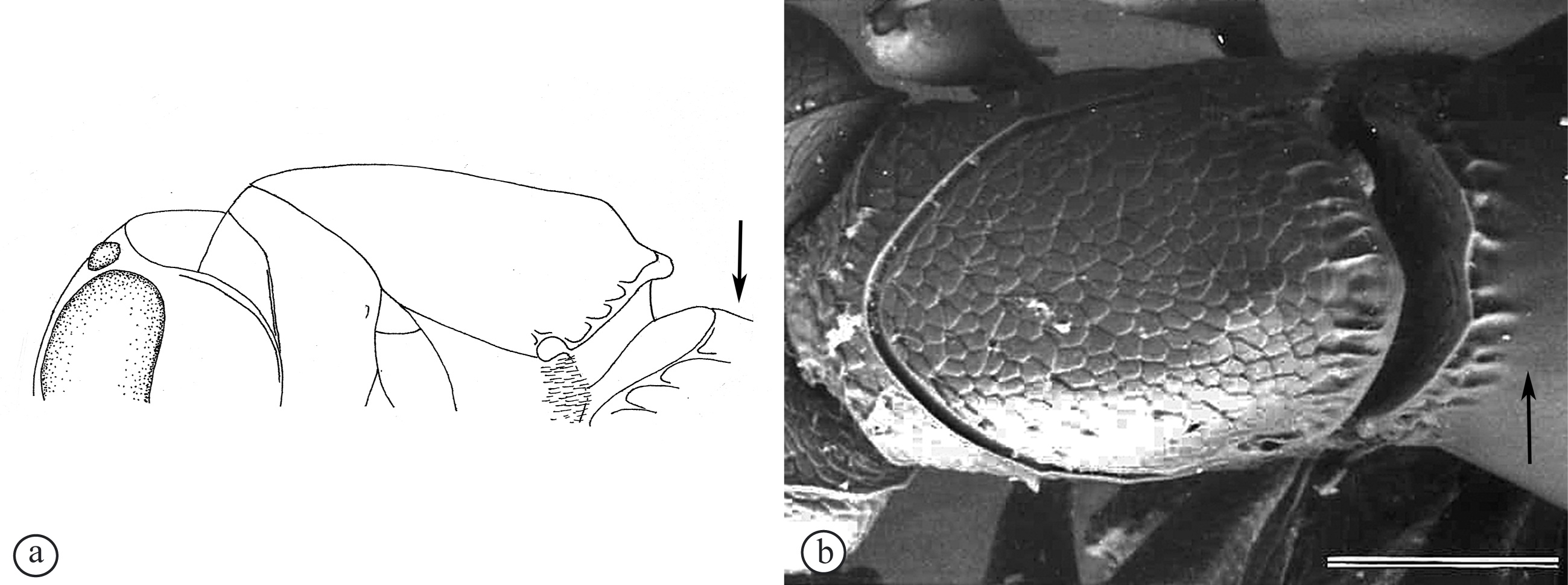
-
Metasomal horn absent (males) …9
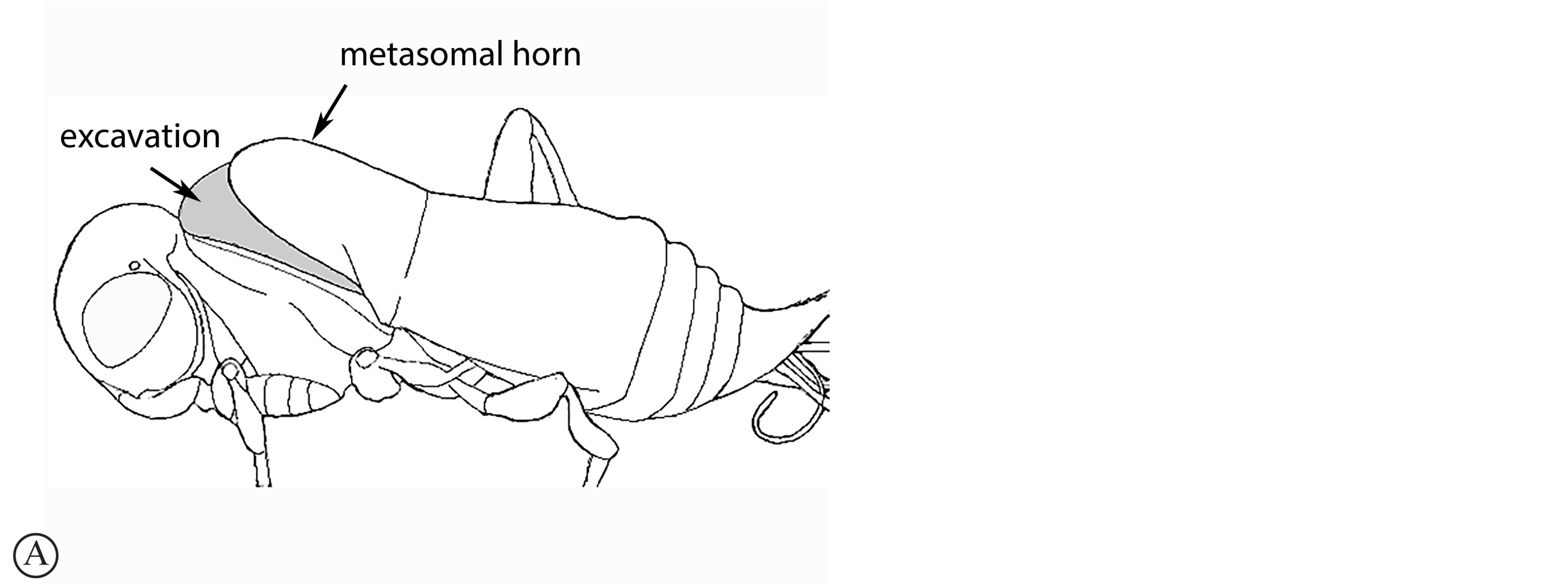
6.
Excavation encompasses entire dorsal length of mesoscutum (A);
metasomal horn extending anteriorly over three-quarters of mesosoma
(A) …Parabaeus
austini Buhl
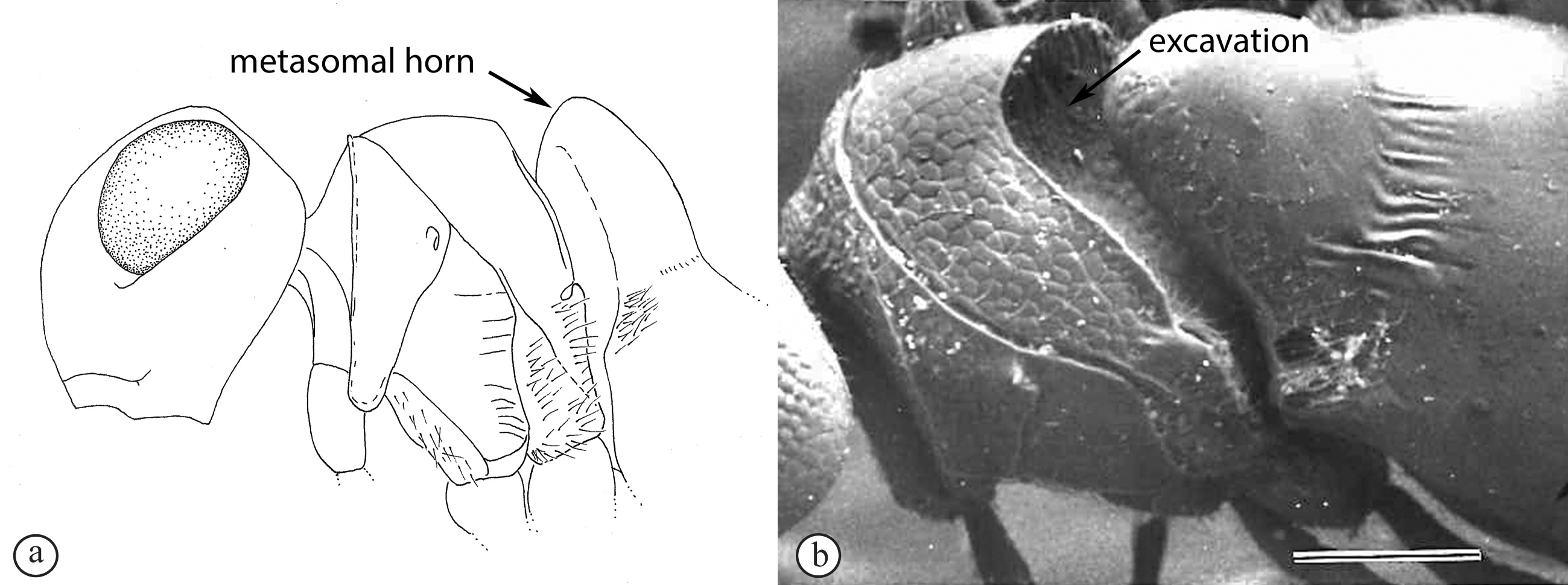
-
Mesoscutum with dorsal surface present, excavation restricted to
posterior half of mesoscutum (a, b); metasomal horn at most
extending over posterior half of mesosoma (a, b) …7
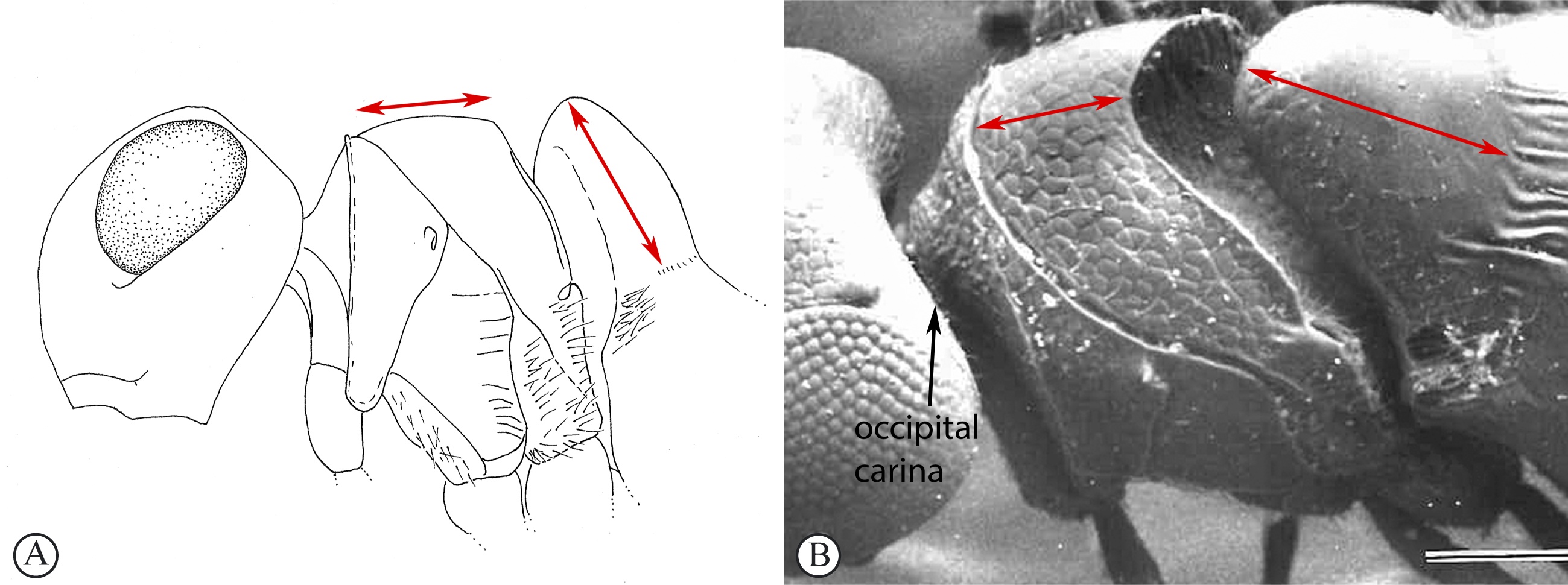
7.
Metasomal horn longer than dorsal surface of mesosoma (A, B);
occipital carina low on posterior head; vertex smoothly rounded (B)
…Parabaeus
quasimodus Austin
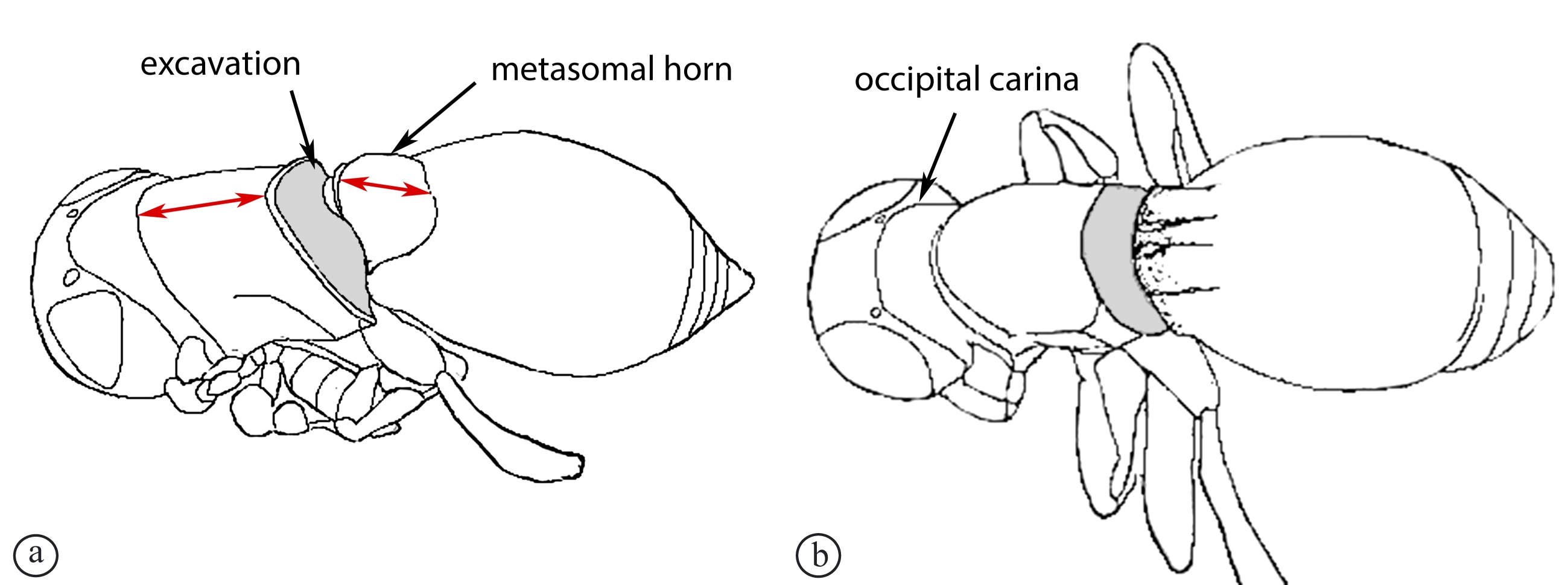
-
Metasomal horn shorter than dorsal surface of mesosoma (a);
occipital carina high on posterior head (a, b); vertex interrupted
by occipital carina (a, b) …8
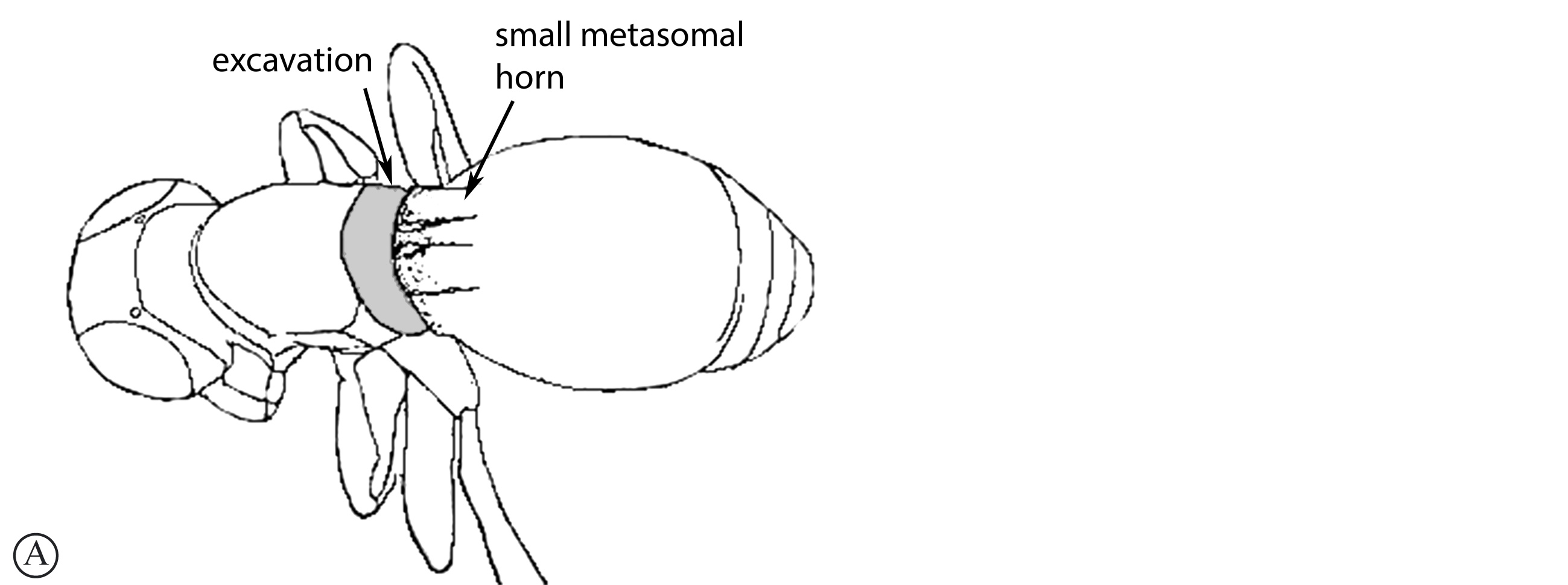
8.
Metasomal horn barely developed, represented by raised area with
longitudinal carinae (A, B), shallow excavation restricted to
posterior face of mesosoma (A, B) …Parabaeus
papei Buhl
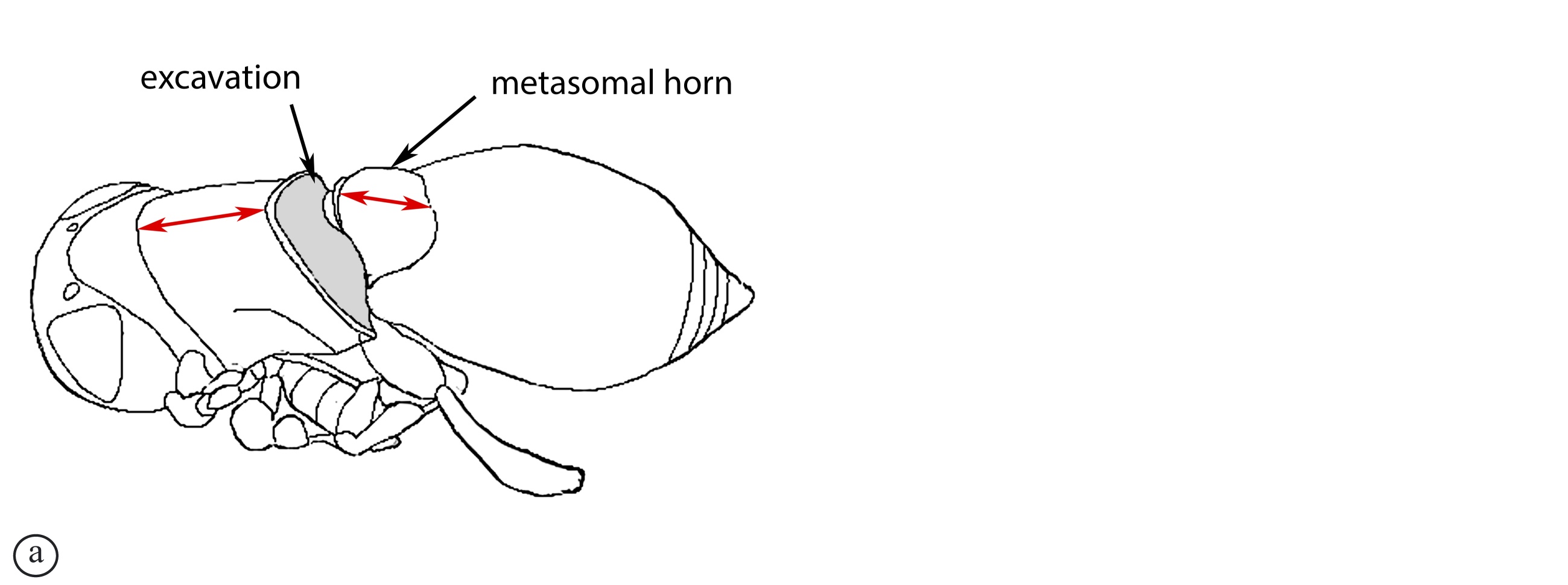
-
Metasomal horn distinct, two-thirds of dorsal length of mesoscutum
(a, b), excavation encompasses c. a quarter of mesoscutal length (a,
b) …Parabaeus
brevicornis Buhl
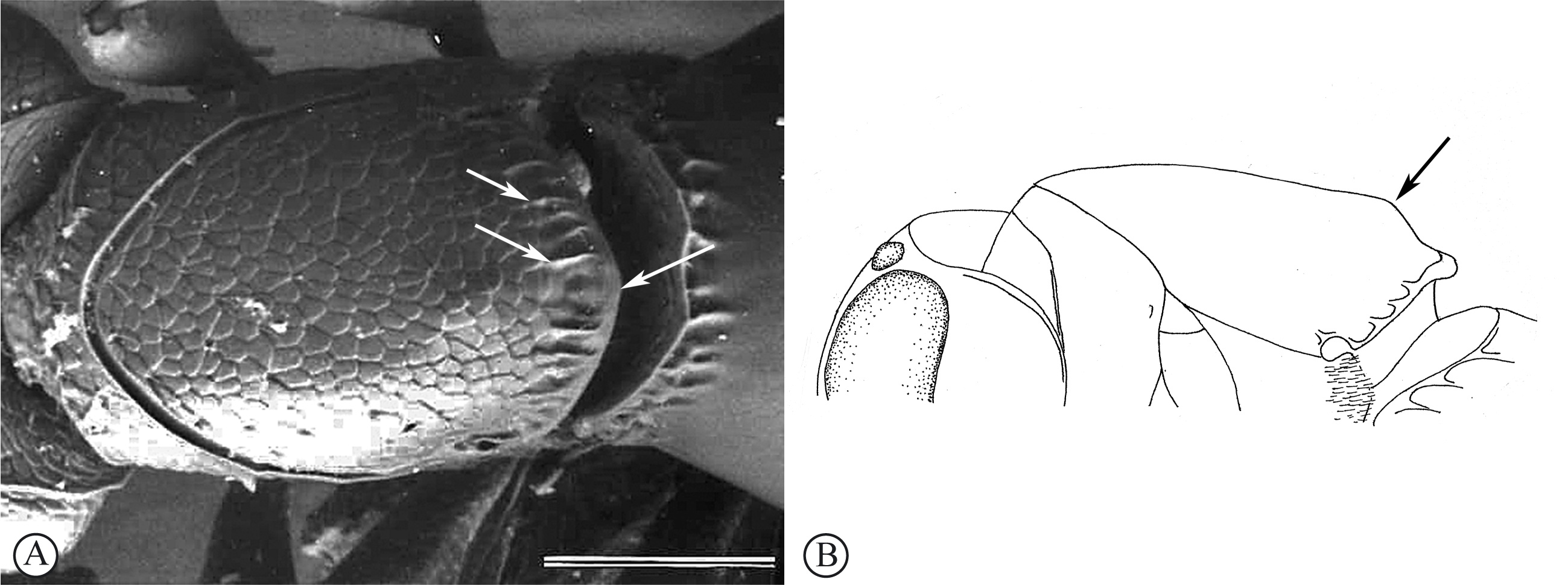
9.
Posterior margin of mesosoma broadly pointed in dorsal view, with
short longitudinal carinae present along posterior border (A); in
lateral view mesosoma gently humped one-third of distance from
posterior margin (B) …Parabaeus
africanus Austin
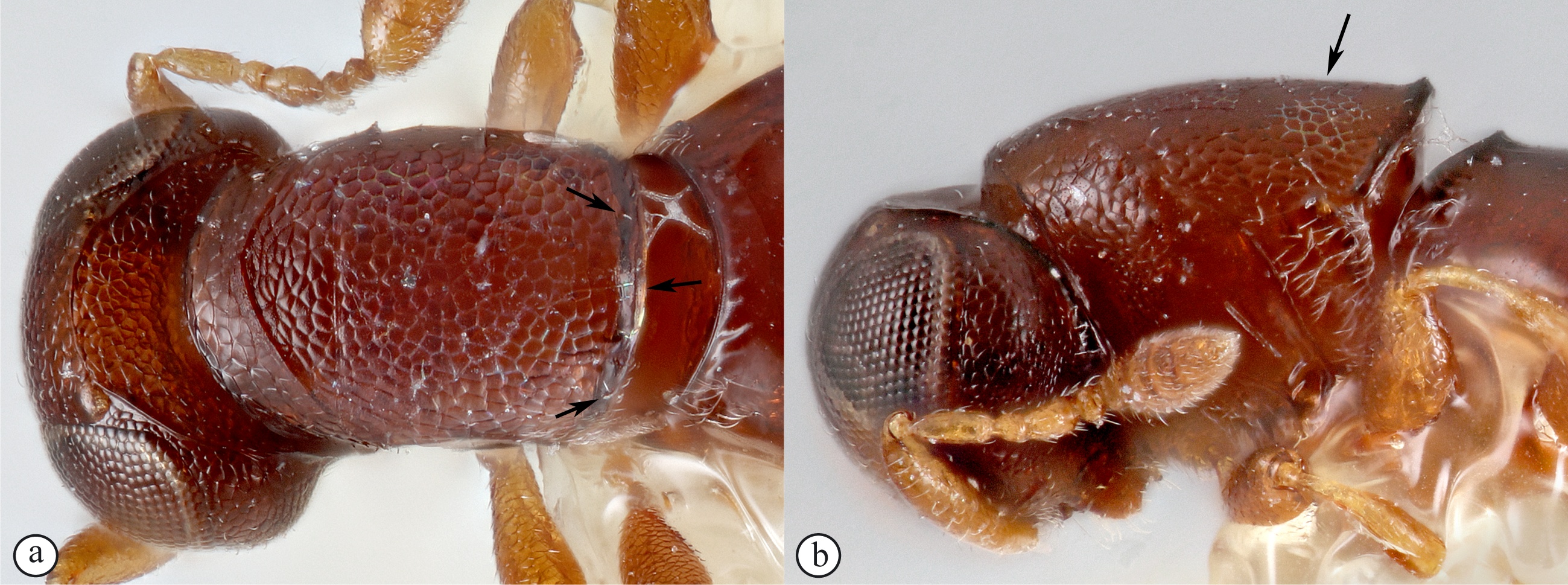
-
Posterior margin of mesosoma rounded in dorsal view, with narrow
smooth posterior border containing scattered short setae in pits
(a); in lateral view mesosoma without dorsal hump (b) …Parabaeus
ruficornis Kieffer
|